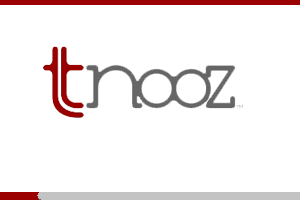State of the travel tech nation – in the year 2040
We live in a fascinating – if uncertain – period for travel tech, as intermediaries, suppliers and, indeed, consumers evolve at an unstoppable rate.
Such progress is inevitable, for example, as consumer behaviour is influenced by mobility, connectivity and a barrage of choices.
As the number of people travelling is expected to double in the next 25 years, the role and function of travel tech will be influenced whether those that use it like or not.
So, alongside the volume of travellers in the marketplace, what other elements are likely to change?
NB: This is an analysis by Jim Fatah, chairman of JFA Systems.
1. Customers will split in two
Two distinct groups of holidaymakers have begun to emerge: those who value low-cost holidays above all else and those who require bespoke, tailor-made experiences.
Over the next 25 years, this gap will continue to grow. As tour operators diversify their offerings to meet the different needs of their respective markets, a clear winner may come out on top.
Established tour operators such as TUI and Thomas Cook in Europe, for example, will fulfil the needs of the low-cost market, while smaller, more agile operators and OTAs can offer flexible and dynamic packages.
However, the dynamic packagers have their own problems…
2. There will be a decline in dynamic packaging
For decades travel agents have offered dynamic packaging as a way of providing flexibility, ease of use and value for money.
However, OTAs and dynamic packaging tour operators will need to add considerable value to what they offer if they are going to survive.
While suppliers make it easier to book direct, hotel chains will increasingly move away from using generic hotel booking sites.
As customers start to take matters into their own hands by booking directly through a supplier’s website and creating their own bespoke packages, they will no longer require the services of an OTA.
The OTA must re-evaluate their offering to provide a cost-effective service or add value if they are to survive for the next 25 years.
3. The demise of the GDS
Once the long-standing providers of multi-functionality systems for travel agents, the role of the Global Distribution System (GDS) is changing.
An increasing number of airlines and other suppliers are now offering direct access to their stock via an API and, as reservation technology suppliers take advantage of this, there is less demand for the GDS offerings from tour operators.
4. The Survivors
Ski companies will survive as most major tour operators offering transfers to resorts still only cover about 20% of the European ski market.
Independents still have room to grow by marketing niche, tailor-made ski holidays.
While low-cost airlines continue to prosper, it makes little sense for them to cover long-haul as the marketplace is too large and volumes too small to truly compete.
Long-haul operators will also continue to survive as the “DIY trip” trend is unlikely to affect them as much.
Holidaymakers looking for all-inclusive vacations will be attracted to package deals rather than tailor-made experiences, therefore cruise operators, coach companies, adventure holidays and theme parks will also come out on top.
5. Understanding customers
Over the next 25 years, as demand for more comprehensive data continues to increase, the software industry will produce off-the-shelf technology to suit the needs of individual suppliers and provide more efficient solutions for data analysis and reporting.
While the adoption of advanced analytics tools is not yet mainstream, key trends show the industry focus is turning away from complex data processing systems.
Instead, companies are managing and analysing data in a user-friendly and simplistic way.
As suppliers gain a deeper understanding of their own data, tailor-made analysis and reporting will continue to replace traditional methods and satisfy customer needs.
This article was originally posted on the Tnooz website,

